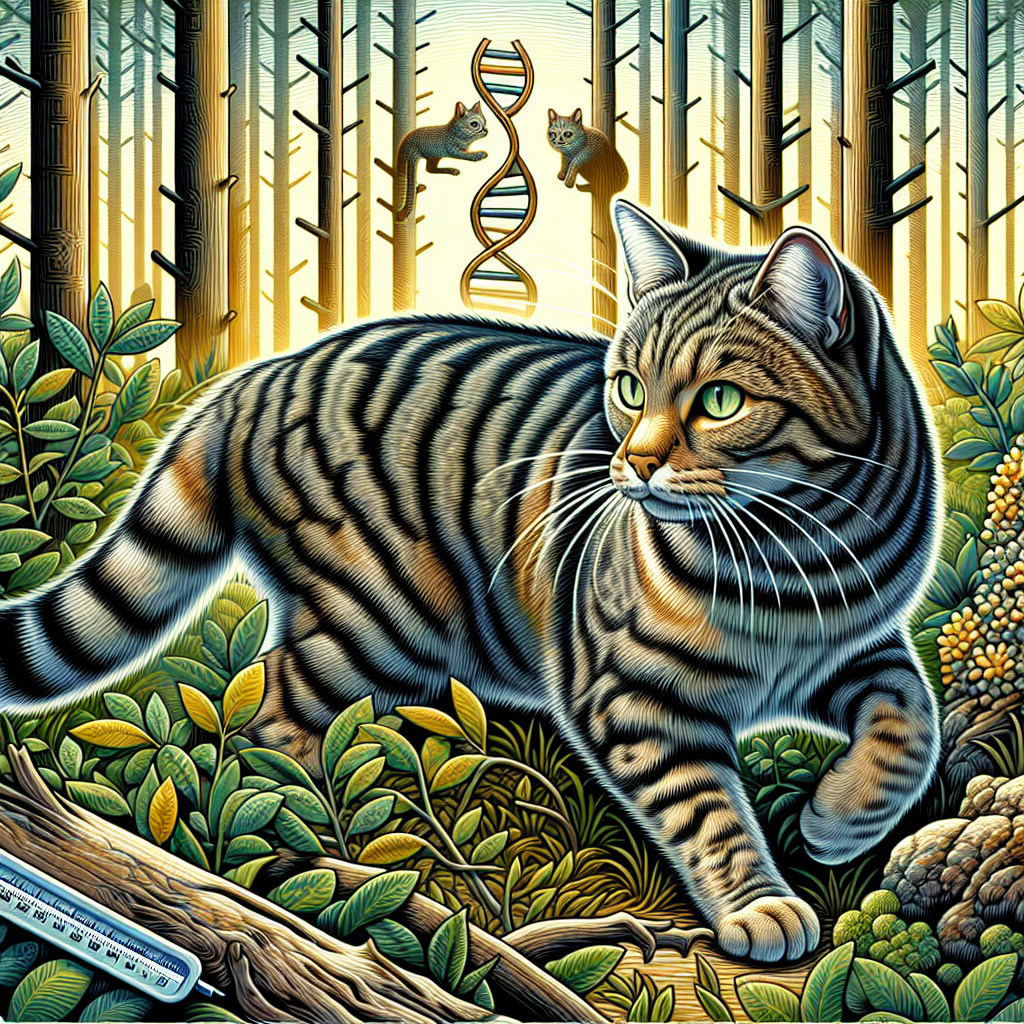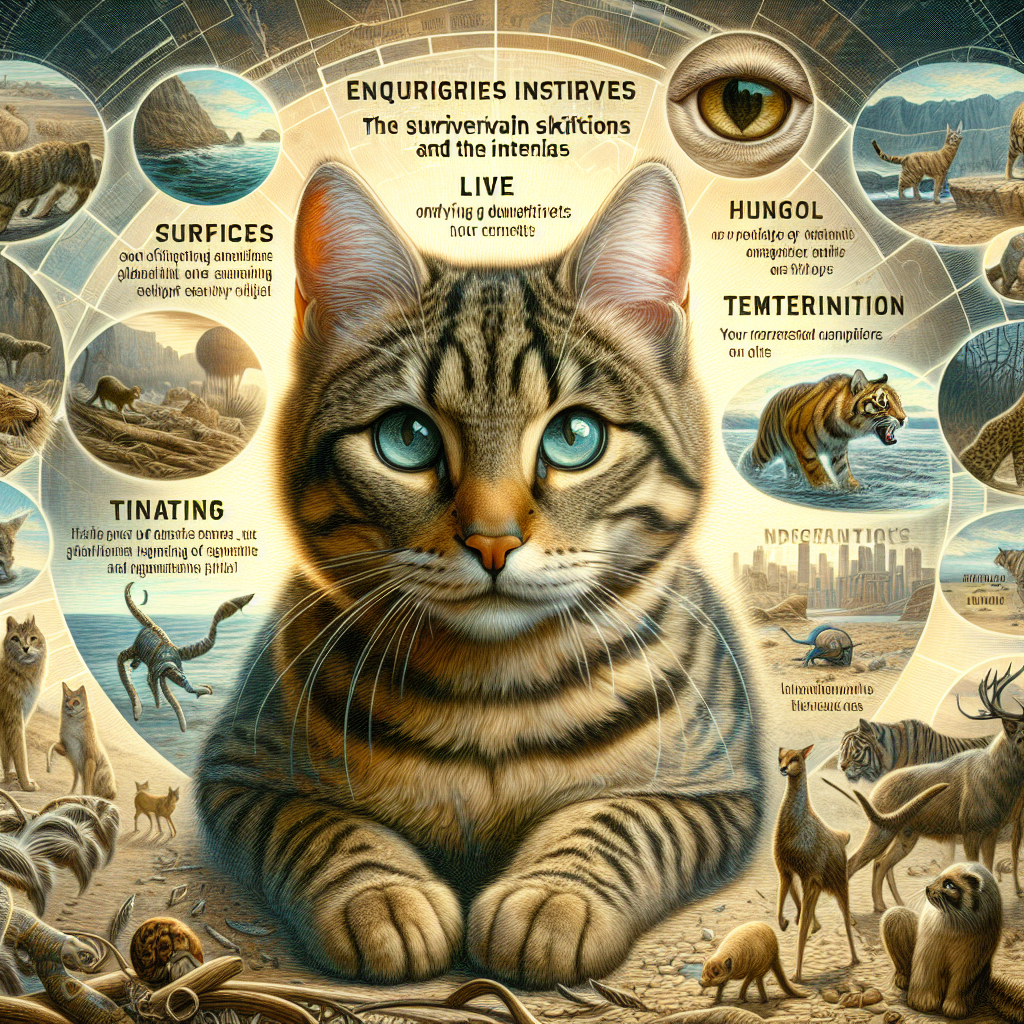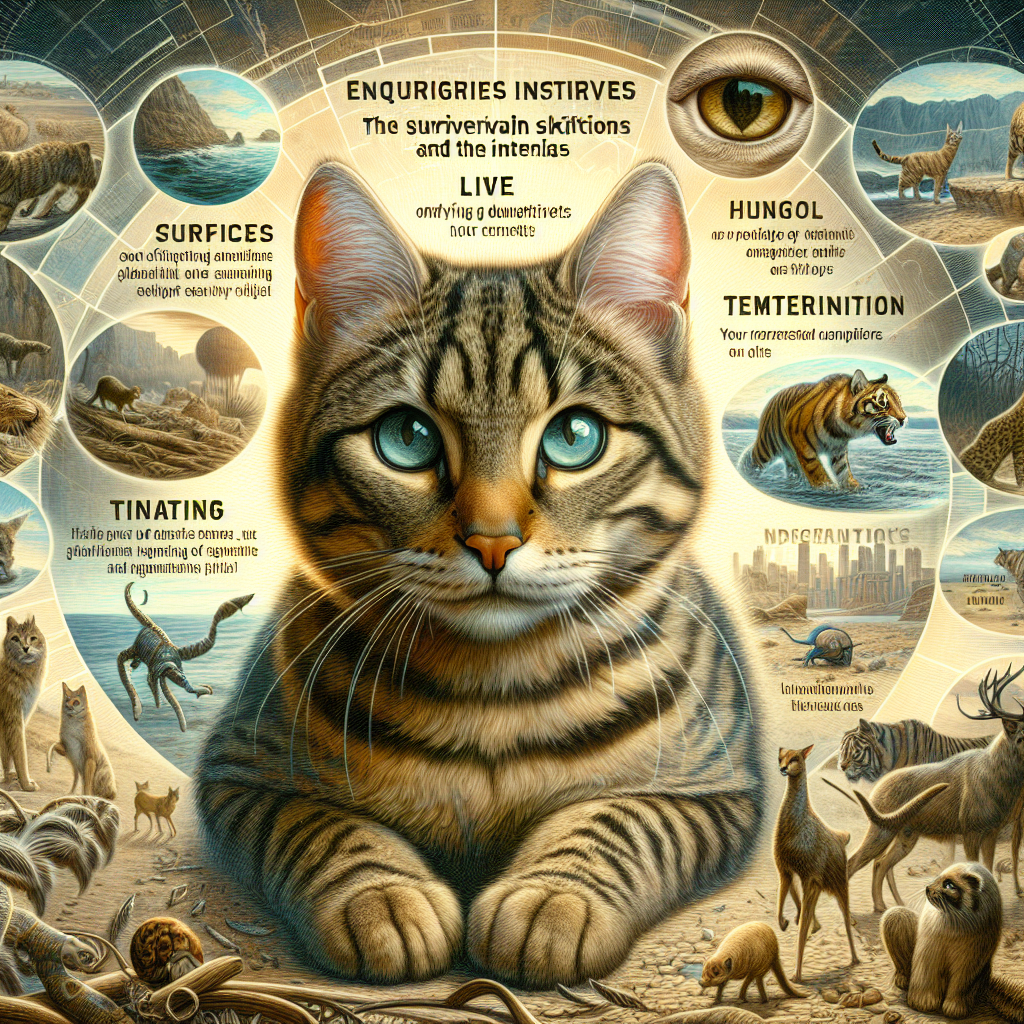Have you ever wondered about the innate nature of tabby cats? Are they natural fighters? This article explores the intriguing question of whether tabby cats possess an inherent fighting instinct. By examining their unique characteristics, history, and behavior, we can gain insight into the fascinating world of these captivating feline fighters. So, let’s embark on a journey to unravel the mysteries behind tabby cats and discover if they are indeed natural fighters.

Physical Attributes of Tabby Cats
Tabby cats are known for their distinctive coat patterns, which is one of their physical attributes that sets them apart from other breeds. Their coat patterns can vary greatly, from classic swirls and stripes to spotted or mackerel patterns. This unique coat is not just aesthetically pleasing, but it also serves a purpose in camouflage, allowing tabby cats to blend in with their surroundings in order to stalk their prey unnoticed.
In addition to their coat patterns, tabby cats are often admired for their muscular build. They have a strong and athletic physique, with well-developed muscles that enable them to be agile and quick on their feet. This physical strength and agility contribute to their hunting prowess and their ability to defend themselves in a fight if necessary.
Furthermore, tabby cats have sharp claws and strong jaws, which are essential tools for both hunting and self-defense. Their claws allow them to climb trees, pounce on prey, and defend themselves against potential threats. Their strong jaws, equipped with sharp teeth, enable them to deliver powerful bites when necessary. These physical attributes make tabby cats formidable opponents when faced with a situation that requires them to fight or protect themselves.
Instincts and Behavior
Tabby cats possess certain instincts and behaviors that can make them natural fighters. One of their prominent instincts is their hunting drive. They have an innate instinct to chase and capture prey, which stems from their ancestors’ survival instincts. This hunting instinct can translate into a fighting instinct when tabby cats feel threatened or when they need to defend their territory or their loved ones.
Territorial behavior is another aspect of the tabby cat’s nature that contributes to their fighting instinct. Tabby cats are known to mark their territory by scent marking, such as rubbing against objects or spraying urine. This territorial behavior serves as a warning to potential intruders and can lead to confrontations if the boundaries are not respected.
Moreover, tabby cats have a protective nature, especially when it comes to their young or their human companions. They can display fierce loyalty and aggression when they perceive a threat to their loved ones. This protective instinct combined with their natural hunting and fighting abilities make tabby cats powerful fighters when the need arises.
Tabby Cat vs. Other Breeds
When comparing tabby cats to other breeds, several factors come into play that set them apart in terms of their fighting skills and competitive nature. Firstly, tabby cats vary in size and strength depending on their individual genetics and upbringing. However, on average, they tend to be medium-sized cats with a solid and muscular build, which gives them an advantage in physical confrontations.
In terms of fighting skills, tabby cats are known for their agility and quick reflexes. Their hunting instincts and strong physical attributes play a significant role in their ability to approach fights strategically and efficiently. They have the ability to assess their opponent’s movements and react swiftly, making them formidable fighters.
Survival techniques also play a role in the fighting capabilities of tabby cats. Their natural instincts, honed through generations of survival in the wild, enable them to adapt to various situations and make split-second decisions. Their keen senses, such as acute hearing and exceptional eyesight, contribute to their ability to quickly assess danger and respond accordingly.
Additionally, tabby cats have a competitive nature that drives them to excel in physical challenges and confrontations. Whether it be playfully wrestling with a fellow feline companion or engaging in a more serious territorial dispute, tabby cats have a natural drive to assert their dominance and prove their strength.
Fight or Flight Response
As with any living creature, tabby cats have a fight or flight response ingrained in their natural instincts. Understanding this response is crucial in comprehending their behavior during confrontations.
When faced with a threat, a tabby cat may choose to fight if they feel they have the advantage or if escape is not a viable option. This fighting response is often triggered when their territory is invaded, when they feel their offspring or human companions are in danger, or when they perceive a direct threat to themselves.
Various factors can trigger a tabby cat’s fight response. These factors can include the size or aggression of the opponent, the perceived level of danger, or the intensity of the threat. However, it is important to note that each tabby cat’s threshold for triggering the fight response may differ based on their individual personality and experiences.
The level of aggression displayed by a tabby cat during a fight can also vary. Some may exhibit a more assertive and dominant behavior, while others may resort to defensive tactics. Their level of aggression is influenced by the specific circumstances of the confrontation and their perception of the threat level.
In situations where fighting is not a viable option or if escape is the best course of action, tabby cats will resort to different escape tactics. These tactics can involve climbing trees, leaping to higher surfaces, or utilizing their agility to evade their opponent. Their natural athletic abilities and quick reflexes enable them to escape dangerous situations efficiently.

Genetic and Behavioral Influences
A tabby cat’s inclination towards fighting can be influenced by both genetic factors and their upbringing. Certain genetic predispositions can make some tabby cats more prone to engage in physical confrontations compared to others.
Socialization also plays a significant role in the behavior of tabby cats. Early experiences and interactions during their formative weeks and months can shape their behavior towards fighting. Positive interactions, exposure to various social situations, and proper training can help mitigate any aggressive tendencies.
Furthermore, the environment in which a tabby cat lives plays a crucial role. A nurturing and stable environment, along with responsible ownership, can help shape a tabby cat’s behavior positively. Providing them with ample mental and physical stimulation, along with a balanced diet, can contribute to their overall well-being and reduce the likelihood of engaging in unnecessary fights.
Myths and Misconceptions
There are several myths and misconceptions surrounding tabby cats and their propensity for aggression. One common misconception is that all tabby cats are inherently aggressive. While tabby cats may have a higher tendency towards fighting due to their hunting instincts and physical attributes, it is incorrect to assume that all tabby cats are aggressive.
Another misunderstanding is the misinterpretation of natural behavior as aggression. Behaviors such as scent marking, territorial disputes, or playfully rough play may be mistakenly perceived as aggression by those unfamiliar with feline behavior. Understanding these natural behaviors is crucial in avoiding unnecessary alarm or labeling a tabby cat as aggressive without cause.
Additionally, the socialization of feral cats or tabby cats with limited human interaction often leads to misconceptions about their aggression. Feral cats may exhibit defensive behaviors out of fear or self-preservation, but with proper socialization and care, they can learn to trust humans and display less aggressive tendencies.
Lastly, it is essential to recognize that tabby cats, like all cats, have individual personality differences. While some tabby cats may naturally have a more assertive or dominant disposition, others may be more inclined towards a peaceful and non-confrontational nature. It is crucial to assess each cat on an individual basis rather than generalizing based on their breed alone.
Fighting Among Tabby Cats
In a multi-cat household or within a feral cat colony, tabby cats may engage in fighting due to territorial disputes or establishing a hierarchy. Understanding the dynamics of feline communication and behavior can shed light on these confrontations.
Territory disputes are one common cause of conflict among tabby cats. Each cat has its own sense of personal space and may fiercely defend it when another cat encroaches. These disputes can result in physical altercations, accompanied by hissing, growling, and arched backs. Establishing clear boundaries and providing each cat with their own space can help prevent these territorial conflicts.
Hierarchy and dominance play a significant role in the dynamics of multiple tabby cats. In a multi-cat household, a dominant cat may assert its authority over others, sometimes resulting in confrontations. This hierarchy is often established through displays of aggression and posturing. Regular play sessions and providing vertical spaces for each cat can help alleviate potential conflicts.
Feline communication is vital in understanding the dynamics of fights among tabby cats. Cats communicate through various vocalizations, body postures, and scent signals. Paying attention to these cues can help identify potential conflicts before they escalate into full-fledged fights. Additionally, interactive play sessions and providing outlets for their energy can reduce the likelihood of redirected aggression between tabby cats.
Playful roughness is a natural behavior among tabby cats and other feline companions. Play fighting helps develop their hunting skills and provides an outlet for excess energy. However, it is crucial for owners to understand the boundaries and ensure that play does not escalate into genuine aggression. Regular monitoring and intervention can help maintain a healthy balance between play and potentially harmful fights.
Nature vs. Nurture
The debate of nature versus nurture plays a significant role when considering the aggressive tendencies of tabby cats or any other breed. While tabby cats may possess innate traits that make them naturally inclined towards fighting, their behavior is also heavily influenced by their learning experiences and conditioning.
Innate traits, such as their physical attributes and hunting instincts, are inherent to tabby cats, inherited through generations of selective breeding. These characteristics provide them with the natural predisposition to engage in fights if necessary. However, inherited traits alone do not determine a cat’s behavior entirely.
Learning and conditioning also play a vital role in shaping a tabby cat’s behavior. Early socialization, exposure to positive experiences, and proper training can help channel their innate instincts in a more controlled manner. Reinforcing non-aggressive behaviors and providing outlets for their energy through interactive play can help strike a balance between their natural inclination towards fighting and obedience.
The role of owners and the environment in which tabby cats reside is crucial in nurturing their behavior. Owners who understand their cat’s needs, provide mental and physical stimulation, and create a safe and stable environment can mitigate aggressive tendencies. Developing a bond based on trust and positive reinforcement can lead to a well-behaved and content tabby cat.
Health and Safety Considerations
Engaging in fights can lead to potential injuries for tabby cats. Scratches, bites, and other wounds can occur during altercations, posing risks for infections or other complications. Proper preventive measures should be taken to ensure the health and safety of tabby cats.
Preventive measures include regular veterinary check-ups, vaccinations, and spaying or neutering to reduce aggressive tendencies. Maintaining a calm and stress-free environment for tabby cats can also contribute to their overall well-being and reduce the likelihood of engaging in fights.
In cases where tabby cats are frequent fighters, veterinary care should be sought to address any injuries or underlying medical conditions that may contribute to their aggression. Vets can evaluate their behavior, provide appropriate medical treatment, and offer behavioral guidance to both the cat and their owner.
Responsible ownership is vital in ensuring the health and safety of tabby cats. Providing a secure and enriching environment, offering a balanced diet, regular exercise, and mental stimulation are all crucial aspects of responsible ownership. Additionally, understanding the individual needs and temperament of the cat and addressing any potential triggers can help mitigate aggressive behavior.
Conclusion
Tabby cats possess unique physical attributes, instincts, and behaviors that can make them natural fighters when necessary. Their distinctive coat patterns, muscular build, sharp claws, and strong jaws contribute to their hunting prowess and self-defense capabilities. Understanding these physical attributes can shed light on their inclination towards fighting.
Tabby cats also possess certain instincts such as hunting drive, territorial behavior, and protective nature. These instincts, combined with their physical attributes, make them formidable opponents when faced with a threat. It is essential to understand and appreciate these natural instincts and behaviors to ensure a harmonious relationship with tabby cats.
Comparing tabby cats to other breeds, their size, strength, fighting skills, and competitive nature set them apart. Their agility, survival techniques, and competitive drive contribute to their ability to excel in physical confrontations.
The fight or flight response is inherent in tabby cats, with various factors triggering the response and different levels of aggression displayed. Understanding the instinct and escape tactics can help guide their responses and keep them safe.
Genetic and behavioral influences, myths and misconceptions, fighting among tabby cats, and the nature versus nurture debate all contribute to the complex understanding of tabby cats as fighters. Genetics, socialization, environment, and responsible ownership all play a role in shaping their aggressive tendencies.
Taking into consideration the health and safety of tabby cats, preventive measures, veterinary care, and responsible ownership are crucial. By providing a nurturing and safe environment, owners can minimize the risk of injuries from fights and promote the overall well-being of their tabby cats.

